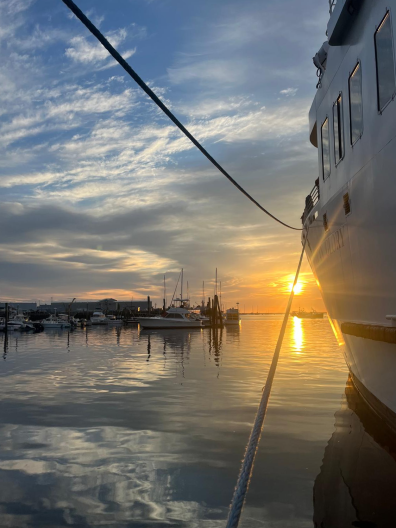A Discussion of Sustainability in the Cruise Ship Industry
Cruise ships have an understandable appeal, promising passengers everything they need under one roof—bars, buffets, pools, activities to ditch their children at, entertainment, and the opportunity to travel to multiple tourist destinations quickly. For many potential “cruisers”, a cruise ship vacation speaks to the consumer urge to maximize the bang for your buck, getting the ultimate all-in-one experience. However, it seems many people intuitively understand that cruises are not a sustainable industry with thousands of people aboard the cumulative 323 cruise ships 365 days a year, which requires a lot of resources to maintain smooth operation. In recent years, the rose-tinted glasses that older generations have viewed cruises through have been challenged. Perhaps to address growing concerns, cruise lines have been trying to align with the younger generations’ values by increasing eco-conscious and sustainable practices. They’ve also attempted to improve accessibility through apps for ease of booking, onboard and offboard activities, scheduling, maps, and more.

Although there’s plenty of cause for skepticism, it seems like these efforts are working, as recent trends show the demographic of cruisers shifting towards Millenials and Gen Z, a result aligned with studies that found those two generations are 27% more likely to spend more on a product if they trust that a brand is engaging in sustainable practices. In light of this seeming success at shifting the narrative of the industry and with sustainability being a driving factor in fostering trust and investment from younger consumers, it is important to ask whether the cruising industry is actually making efforts to deliver on its promises of sustainability, or if it’s simply a marketing tactic to influence consumer behavior and perception.
The definition of sustainability can be murky, especially when it’s applied to terms and practices that historically have drawn criticism for their potential environmental impact, such as economic development. The current operational definition of “sustainable development” used by the United Nations today was established by the 1987 Brundtland Commission, an independent commission of the UN, tasked to focus on environmental and developmental problems and solutions: “Sustainable development is development that meets the needs of the present without compromising the ability of future generations to meet their own needs.” Admittedly, this definition has been widely critiqued as being too open to interpretation, begging the question of exactly whose needs and welfare are being protected or prioritized. Regardless, it remains the standard framework.

The U.S. Environmental Protection Agency’s definition offers a little more specificity: “…to create and maintain conditions under which humans and nature can exist in productive harmony, that permit fulfilling the social, economic and other requirements of present and future generations.” In this definition, three frameworks from which to view sustainability are identified—social, economic, and the rather ambiguous category of “other.” It is fair to say that the most utilized lens, especially in the cruising industry’s case, is an economic one. The cruising industry is booming, and experiencing ongoing economic growth, with the Cruise Lines International Association 2023 annual report projecting the global cruise market to reach $35.87B in 2027, and the US projected to lead the industry in terms of revenue, reaching $18.36 billion annually in 2024. In 2024, 14 new ships were built, including the ship that would take the title for the largest cruise ship in the world at 250,800 tons, and 17 more are slated for 2025. The number of ships built has remained fairly consistent since 2000, but they are now twice as big as they were in 2000.
In parallel with this growth, the CLIA’s 2024 Briefing on Sustainability details how “cruise lines are actively pursuing net zero emissions by 2050” by investing in alternative fuels like Liquid Nitrogen Gas (LNG). The CLIA’s New Environmental Data Report claims that “LNG has virtually zero sulfur emissions and particulate emissions, reduces NOx emissions by approximately 85%, and achieves up to a 20% reduction in greenhouse gas emissions,” with more than half of the new ships being built in the next five years being LNG enabled. At first glance, this sounds promising and demonstrative of how the industry is committed to becoming more sustainable and doing its part to adapt to the climate crisis. That is, until you factor in that LNG is mostly made of methane, a greenhouse gas that is 80 times more potent than CO2.

In a study published by the American Chemical Society in 2021, researchers found that within the combustion process of LNG engines there is a side effect called the “methane slip” where, depending on the type of engine, unburnt methane is emitted. The study reports that “no emission directives or standards are currently in place, which would directly regulate the methane slip for marine LNG engines,” highlighting that fact-based emissions regulations should be considered for this type of alternative fuel.
A study from Wuhan, China about their LNG-powered ships found similar results, with a reduction in Carbon dioxide but an increase in methane emissions. Ideally, these new standards would be based on a cost-benefit analysis that includes socio-economic and environmental costs, seriously noting the change in methane emissions. Even though there are known methane emissions of this fuel type with the lack of regulations surrounding this new ‘sustainable fuel initiative’ and relatively few studies on the environmental impacts, LNG remains at the forefront of the cruising industry’s sustainability initiatives.
Evidenced by their approach to championing alternative fuels, the cruising industry is technically following sustainable development pathways within the loose interpretation established in the 1980s. The cruising industry is reducing its greenhouse gas (GHG) emissions with alternative fuels and they are abiding by all current regulations. To ensure that private companies in inherently consumptive industries, such as cruising, make truly informed and impactful changes when it comes to sustainable practices—especially given the seeming sole focus on an economic framework of sustainability—maybe it is time to adopt a new definition of sustainability. Leslie Paul Thiele’s book, Sustainability, offers a different definition.
“Sustainability is not only concerned with the long-term survival of a specific practice, relationship, or institution. It is concerned with the endurance of these things within an expanded scope. It extends our concern beyond the welfare of those participants who are directly involved in a relationship, practice, and institution. Sustainability also concerns the welfare of other stakeholders who become impacted by our actions—people and other species in distant time or space.”
As concerns around equity, socio-ecological impacts, and community resilience are becoming far more important than they used to be for consumers, it is high time for governing bodies to adopt a new framework for sustainability.